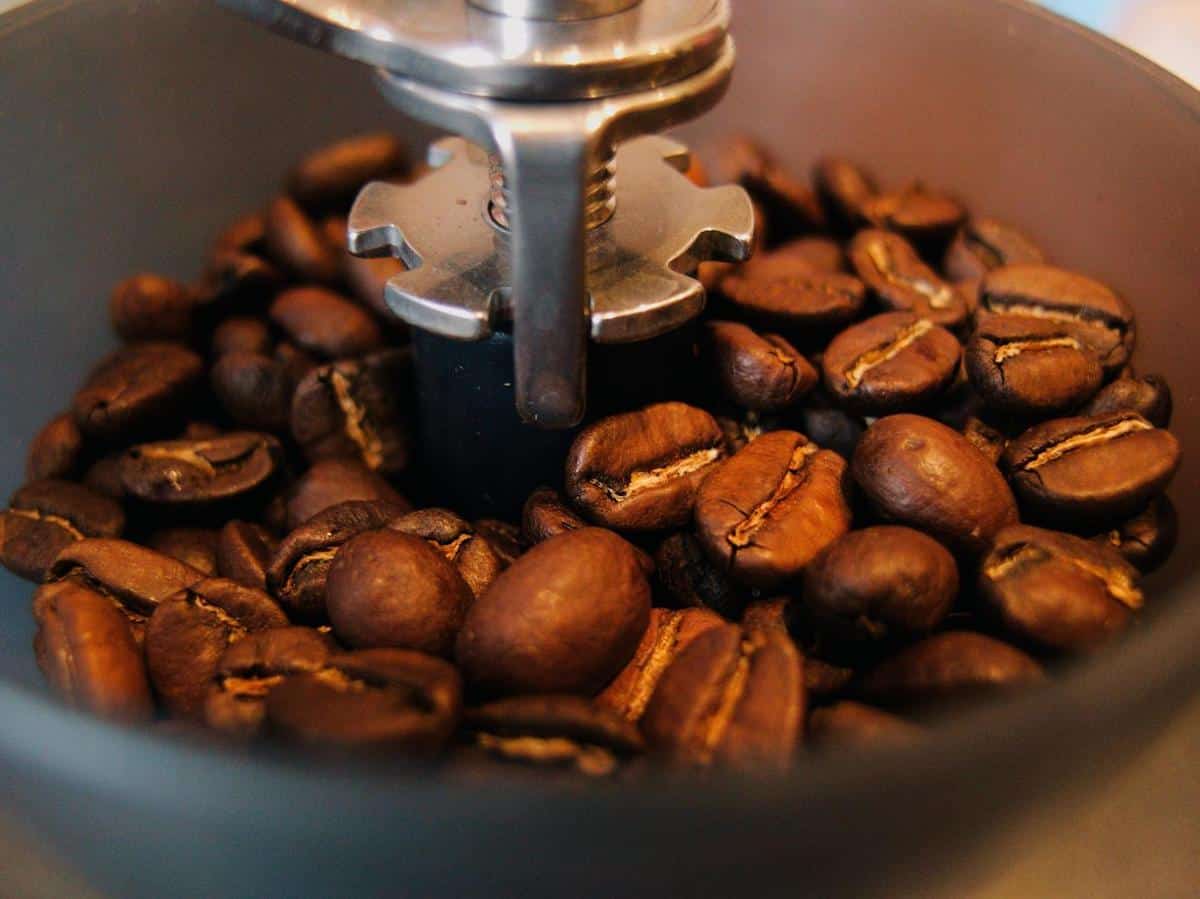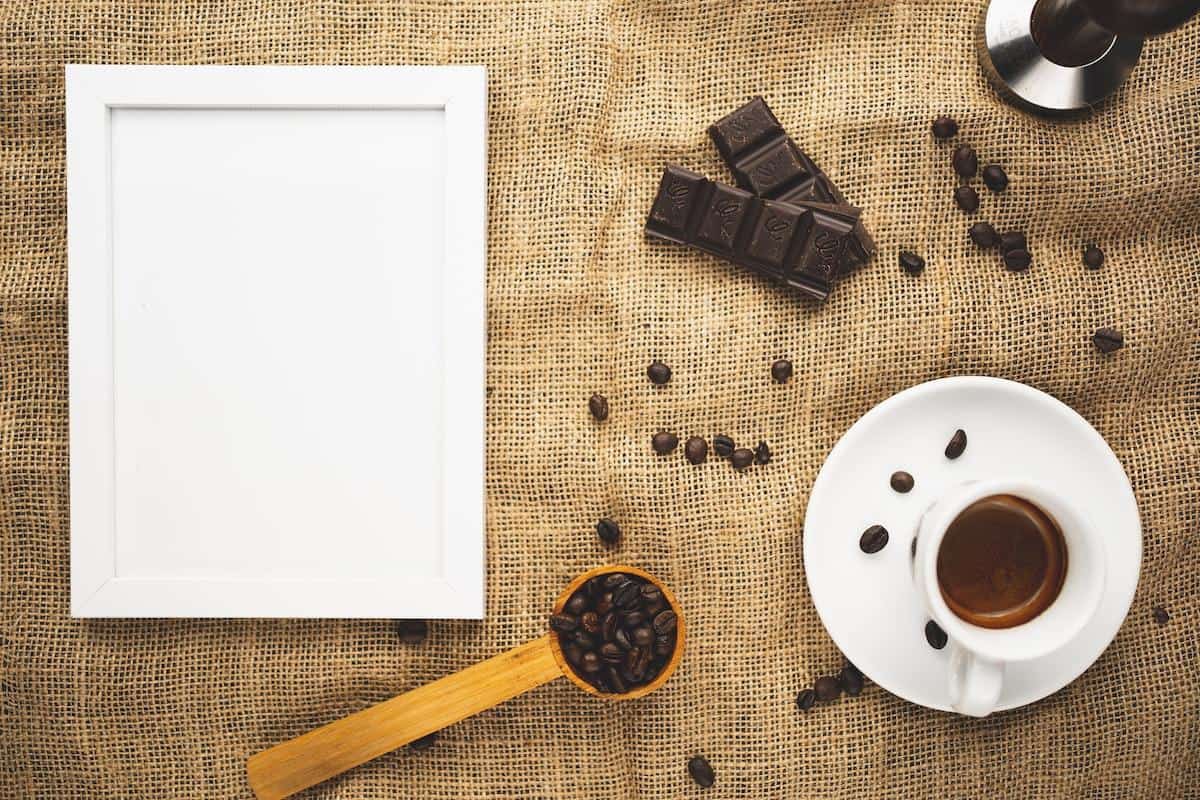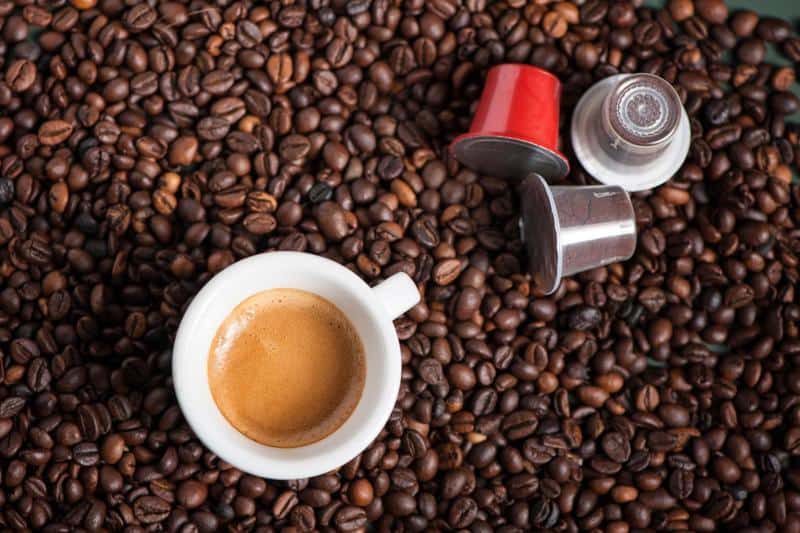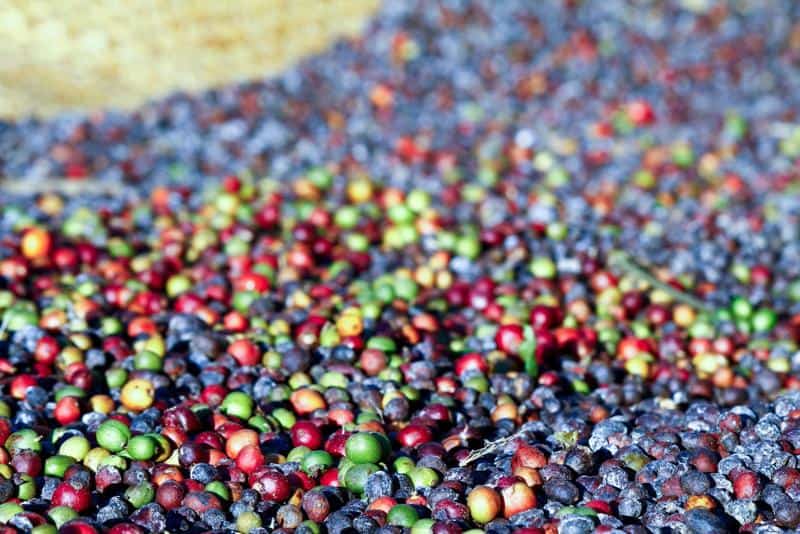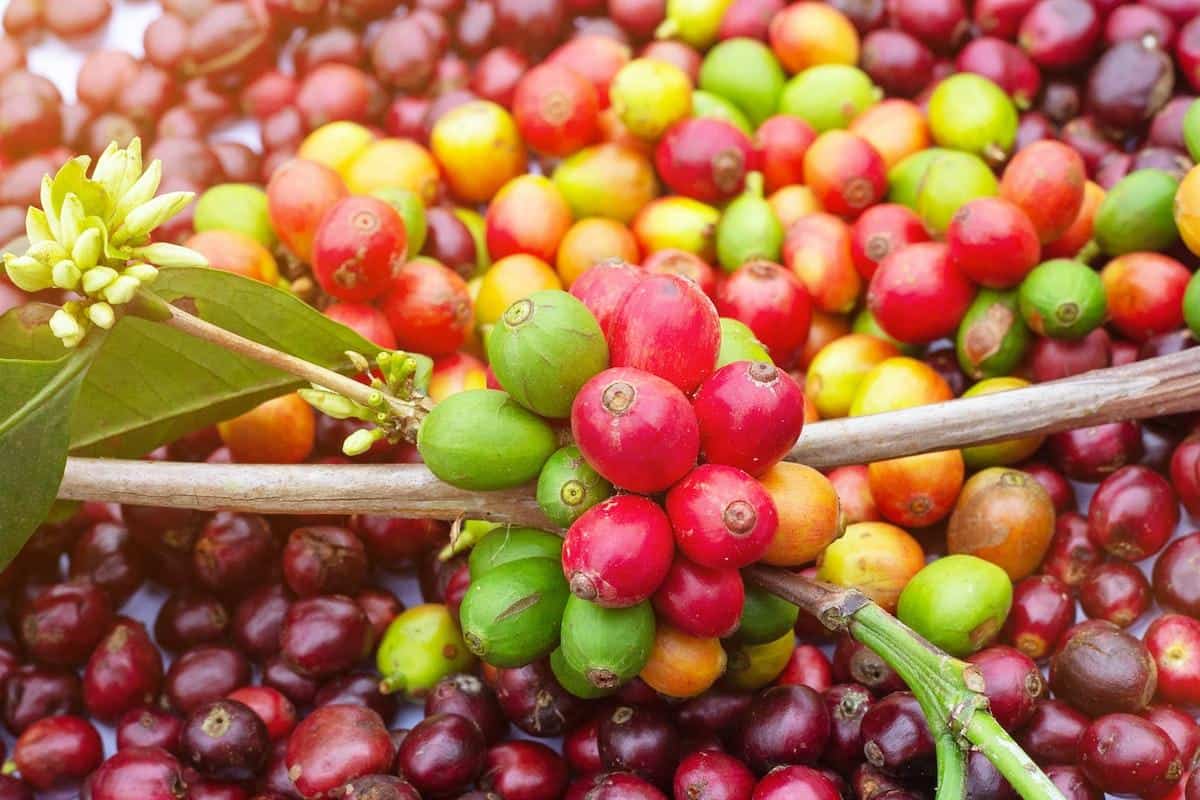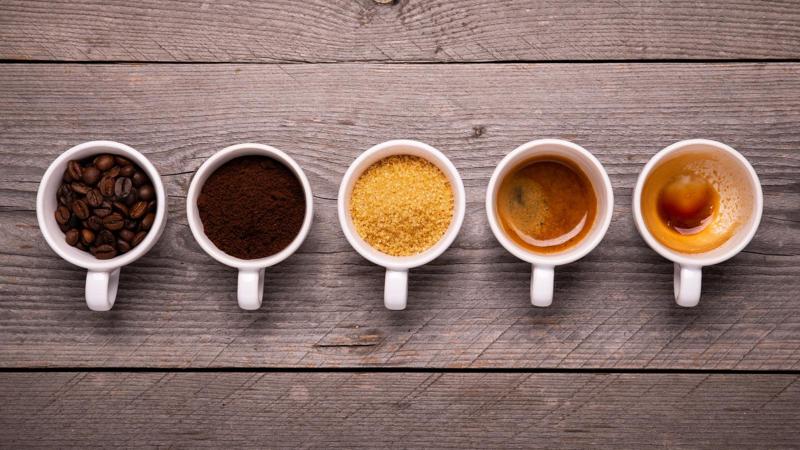Grinding coffee beans is a crucial step in the process of brewing that can significantly impact the taste and quality of your cup of coffee. In this article, we will delve into the importance of grinding coffee beans for achieving a flavorful and aromatic brew. We will explore the science behind grinding and how it impacts the taste and quality of the final beverage.
When you grind coffee beans, you are essentially breaking down the beans into smaller particles, increasing their surface area. This increased surface area allows for faster extraction when hot water comes into contact with the grounds during brewing. The size of the coffee grounds plays a vital role in determining how quickly water extracts flavors from them.
The science behind grinding lies in achieving optimal extraction. When the ground particles are too large, under-extraction occurs, resulting in a weak and underwhelming cup of coffee. On the other hand, if the grounds are too fine, over-extraction takes place, leading to a bitter and unpleasant taste. Achieving consistency in grind size is also important for even extraction and a well-balanced cup of coffee.
In this section, we will dive deeper into these concepts, exploring different grinder options available in the market and discussing their pros and cons. By understanding why grinding is essential and how it affects your coffee’s flavor profile, you can make informed choices when selecting your preferred grinder type and optimize your brewing experience to achieve a perfect cup of brewed delight every time.
Different Types of Coffee Grinders
Grinding coffee beans is an essential step in the coffee brewing process, as it greatly impacts the flavor and quality of the final cup. In this section, we will explore the different types of coffee grinders available in the market and provide insights into their pros and cons. By understanding the characteristics of each grinder type, readers can make an informed decision when selecting the most suitable grinder for their specific needs.
- Burr Grinders: Burr grinders are considered to be the gold standard in grinding coffee beans. These grinders use two revolving abrasive surfaces (burrs) to crush the beans into consistent particle sizes. The main advantages of burr grinders include precise grind control, which allows for a more uniform extraction, and less heat generation during grinding, which preserves the flavor and aroma of the coffee. However, burr grinders tend to be more expensive than other types and may require occasional maintenance.
- Blade Grinders: Blade grinders are more affordable and widely available compared to burr grinders. These grinders use a spinning blade to chop the coffee beans into smaller pieces. Blade grinders are suitable for beginners or those on a budget, but they often result in inconsistent grind sizes due to uneven chopping action. Additionally, blade grinders can generate heat during grinding, potentially affecting the taste of the coffee.
- Manual Grinders: Manual or hand-operated grinders offer a unique experience for coffee enthusiasts who enjoy a hands-on approach to brewing. These compact and portable grinders usually have a burr mechanism that requires manual rotation or cranking to grind the beans. Manual grinders are praised for their precision and low noise level while offering a sense of control over the grinding process. However, they may not be ideal for users seeking convenience or grinding large quantities of coffee at once.
| Coffee Grinder Type | Pros | Cons |
|---|---|---|
| Burr Grinders |
|
|
| Blade Grinders |
|
|
| Manual Grinders |
|
|
By weighing the pros and cons of each type, readers can determine which coffee grinder aligns best with their brewing preferences, budget, and lifestyle. The chosen grinder should offer the desired level of precision, produce a consistent grind size suitable for their preferred brewing method, and fit within their overall coffee setup. With the right grinder in hand, coffee lovers can take another step towards enjoying a truly flavorful and aromatic cup of java.
Understanding Coffee Grind Size
When it comes to achieving the perfect cup of coffee, selecting the right grind size is crucial. The grind size determines the rate at which water extracts flavor from the coffee beans during brewing, and different brewing methods require different grind sizes to achieve optimal extraction. In this section, we will provide a comprehensive guide to coffee grind sizes and suggest appropriate settings for various brewing methods.
One of the coarsest grind sizes is extra coarse, which is ideal for brewing methods like French press or cold brew. This size allows for a slower extraction process and results in a rich and bold flavor profile. On the other end of the spectrum, we have extra fine grinds, which are typically used for espresso machines. This ultra-fine size allows for a quick extraction time and produces a concentrated shot of espresso with a strong flavor.
In between these extremes, there are several other grind sizes that cater to different brewing methods. For example, a medium-coarse grind is commonly used for pour-over coffee, striking a balance between extraction speed and flavor intensity. Medium grinds are suitable for drip brewers, while medium-fine grinds work well with Aeropress or Siphon brewers.
It’s important to note that every grinder may have slightly different settings for each grind size. It’s best to refer to your grinder’s manual or consult guides specific to your grinder model and brewing method preferences. Experimentation is key when finding the ideal grind size that suits your taste preferences.
By understanding coffee grind sizes and selecting the right one for your preferred brewing method, you can unlock the full potential of your coffee beans and enjoy a flavorful and well-extracted cup every time you brew.
How to Grind Coffee Beans
Grinding coffee beans is a critical step in the coffee brewing process. It allows for more surface area to be exposed to the hot water, resulting in a flavorful and aromatic cup of coffee. In this step-by-step guide, we will walk readers through the process of grinding coffee beans using a chosen type of grinder.
- Choose the right grinder: There are several types of coffee grinders available, each with its own pros and cons. Burr grinders are known for their consistent grind size and are highly recommended for achieving uniform results. Blade grinders, on the other hand, are more affordable but tend to produce inconsistent grind sizes. Manual grinders offer a hands-on approach and are perfect for those who prefer control over their grind.
- Selecting the correct grind size: The grind size plays a crucial role in determining the final flavor profile of your coffee. Different brewing methods require different grind sizes. For example, French press requires a coarse grind, while espresso calls for an extra-fine grind. To achieve the desired results, it’s important to adjust the grinder’s settings accordingly.
- Adjusting the grinder settings: Once you’ve selected your desired grind size, it’s time to adjust the settings on your grinder. Most grinders have adjustable settings that allow you to choose from various levels of coarseness or fineness. Start with a medium setting and experiment from there based on your personal preference and brewing method.
- Grind your coffee beans: Now that you have everything set up, it’s time to start grinding. Place your whole coffee beans into the grinder’s hopper and turn on the machine. Make sure to hold onto the grinder securely as vibrations may occur during operation. Grind until you have achieved a uniform consistency based on your selected grind size.
- Store or use immediately: Once you’ve ground your desired amount of coffee beans, it’s important to either use them immediately or store them properly to maintain freshness and flavor. Ground coffee is more susceptible to oxidation, so it’s best to use it within 30 minutes for optimal taste. If you need to store the grounds, transfer them into an airtight container and keep them in a cool, dry place away from light and moisture.
By following these step-by-step instructions, beginners can achieve consistent and uniform results when grinding their coffee beans. Experiment with different grind sizes and brewing methods to personalize your coffee experience and discover your perfect cup of java. Keep in mind that practice makes perfect, so don’t be afraid to adjust your settings and techniques until you find what works best for you. Happy grinding.
Tips and Tricks for Grind Consistency
Proper Cleaning and Maintenance of the Grinder
One of the key factors in achieving grind consistency is ensuring that the coffee grinder is clean and well-maintained. Over time, coffee oils and residue can build up in the grinder, affecting the quality of the grounds and causing inconsistent results. To maintain grind consistency, it is important to regularly clean your grinder.
Start by unplugging the grinder and disassembling it according to the manufacturer’s instructions. Remove any coffee residue from the hopper, burrs, and any other removable parts. Use a small brush or toothbrush to gently scrub away any stubborn residue. Be sure to also wipe down the exterior of the grinder with a damp cloth.
For deeper cleaning, consider using a grinder cleaner specifically designed for removing coffee buildup. These cleaners often come in tablet or powder form and can effectively remove oils and stale coffee particles that may be affecting grind consistency. Simply follow the instructions on the cleaner packaging for best results.
Regular maintenance of your grinder will also help to ensure consistent grinding performance. Check your user manual for any specific maintenance recommendations from the manufacturer, such as lubricating moving parts or replacing worn out burrs. By keeping your grinder clean and well-maintained, you can optimize its performance and achieve a more consistent grind.
Avoiding Heat Buildup
Heat generated during grinding can have a significant impact on grind consistency and ultimately affect the taste of your brewed coffee. High-speed grinders are particularly prone to generating heat due to friction between the beans and blades or burrs. To avoid heat buildup:
- Grind in short bursts: Instead of grinding continuously for long periods of time, try pulsing or grinding in short bursts with breaks in between. This allows the heat to dissipate instead of building up.
- Use a slow-speed grinder: Consider investing in a burr grinder with low RPM (rotations per minute). These grinders generate less heat and are known for their ability to produce more consistent grinds.
- Chill the beans: For an extra precaution, you can also try chilling the coffee beans in the freezer for a few minutes before grinding. This can help to reduce heat buildup during grinding.
By taking steps to minimize heat buildup during grinding, you can maintain grind consistency and preserve the delicate flavors and aromas of your coffee beans.
Adjusting Grind Settings Based on Personal Preferences
Every coffee lover has their own preference when it comes to the strength and flavor of their coffee. Adjusting the grind size is one way to customize your brewing experience and achieve the desired taste profile. Here are some factors to consider when adjusting grind settings based on personal preferences:
- Extraction time: Generally, a finer grind size will result in a shorter extraction time, producing a stronger cup of coffee. Conversely, a coarser grind size will extend the extraction time and result in a milder cup.
- Brewing method: Different brewing methods require different grind sizes. For example, pour-over methods like V60 or Chemex typically call for medium-coarse grounds while espresso requires a fine grind.
- Taste preference: Experiment with different grind sizes to find your preferred balance between brightness and bitterness in your cup of coffee. Finer grinds tend to bring out more flavors but may also introduce bitterness if over-extracted.
- Bean freshness: Freshly roasted beans tend to release more carbon dioxide, which affects how quickly water passes through during brewing. Adjusting your grinder settings based on bean freshness can help ensure optimal extraction.
Remember that achieving the perfect grind size might require some trial and error as it depends on various factors such as bean type, brewing equipment, and personal taste preferences. By carefully adjusting your grinder settings based on these factors, you can achieve a consistent and well-balanced cup of coffee that satisfies your palate.
The Importance of Freshly Grinding Coffee Beans
Freshly ground coffee beans play a pivotal role in enhancing the taste and aroma of your brewed coffee. The act of grinding coffee just before brewing ensures that you are extracting the maximum flavor from the beans, resulting in a more vibrant and satisfying cup. Here, we will delve into why it is crucial to grind beans just before brewing and explore the factors that affect the shelf life of ground coffee.
One of the main reasons why freshly grinding coffee is essential is to preserve the volatile compounds responsible for its distinct flavors and aromas. As soon as coffee beans are exposed to air, they begin to oxidize, leading to a loss of these delicate compounds. By grinding your coffee immediately before brewing, you minimize this oxidation process and retain more of the natural flavors and aromas.
Another factor that affects the freshness and quality of ground coffee is surface area. When coffee beans are ground into smaller particles, their surface area increases significantly. This increased exposure can accelerate flavor degradation, allowing aromas to escape more easily and making the coffee go stale faster. Therefore, by grinding your beans just before brewing, you can minimize surface area exposure and ensure that you are enjoying a fresher cup of coffee.
The storage conditions also impact the shelf life of ground coffee. Ground coffee should ideally be stored in an airtight container in a cool, dark place away from moisture and strong odors. Heat, humidity, light, and strong odors can all contribute to faster deterioration of ground coffee’s flavors and aromas. By controlling these factors during storage, you can extend the shelf life of your ground coffee and enjoy consistently delicious cups.
Troubleshooting Common Grinding Issues
In the process of grinding coffee beans, there are several common issues that may arise. This section will address these problems and provide practical solutions to ensure a smooth and successful grinding experience.
One common issue faced by coffee enthusiasts is achieving an uneven grind size. This can result in over-extraction or under-extraction during the brewing process, leading to a less flavorful or imbalanced cup of coffee. To resolve this problem, it is important to first identify the cause. Uneven grind size can often be attributed to dull or misaligned burrs in burr grinders or inconsistent blade movement in blade grinders.
To address this, it is recommended to regularly clean and maintain your grinder. Use a brush to remove any coffee particles that may be stuck between the burrs or blades. Additionally, consider sharpening or replacing dull burrs if necessary. Another helpful tip is to ensure that you are using the correct grind size setting for your chosen brewing method. Adjusting the grind settings based on personal preference can also help achieve a more consistent grind.
Another issue that may occur while grinding coffee beans is grinder jamming. This can happen when too many beans are added at once or if there is an obstruction in the grinder mechanism. To prevent jamming, it is important to feed beans into the grinder slowly and incrementally, allowing them enough time to be processed smoothly. If a jam does occur, carefully unplug the grinder and remove any obstructions before restarting it.
Excessive heat generation during grinding can also be problematic as it can affect the flavor and quality of the coffee grounds. Heat buildup commonly occurs with high-speed blade grinders due to friction generated by the rapid rotation of blades. To mitigate this issue, consider using a low-speed grinder such as a burr grinder which produces less heat during operation. Alternatively, you can pause periodically during grinding to allow the blades to cool down.
By addressing these common grinding issues with practical solutions, coffee enthusiasts can enhance their grinding experience and achieve a consistent and high-quality grind. Creating the perfect cup of coffee starts with understanding and troubleshooting these common problems.
| Common Grinding Issue | Solution |
|---|---|
| Uneven grind size |
|
| Jamming |
|
| Excessive heat generation |
|
Beyond Coffee
Homemade Coffee Body Scrubs
One unique and creative way to utilize ground coffee beans is by making homemade coffee body scrubs. Coffee grounds can be used as an exfoliant to remove dead skin cells and leave the skin feeling smooth and rejuvenated. The texture of the grounds provides gentle exfoliation, while the natural antioxidants present in coffee can help tighten the skin and reduce the appearance of cellulite.
To make a simple DIY coffee body scrub, combine equal parts of ground coffee beans with a carrier oil such as coconut oil or almond oil. Mix well until you achieve a paste-like consistency. Gently massage the scrub onto damp skin in circular motions, focusing on areas prone to dryness or roughness. Rinse off with warm water to reveal soft, glowing skin.
Incorporating Coffee into Baking Recipes
Coffee lovers can also explore the culinary possibilities of using ground coffee beans in baking recipes. The rich flavor profile of coffee can add depth and complexity to various sweet treats. Ground coffee beans can be incorporated into cakes, cookies, brownies, and even ice creams for a burst of robust flavor.
To infuse your baked goods with coffee flavor, simply add a tablespoon or two of finely ground coffee beans to your dry ingredients before mixing them into your recipe. Adjust the amount based on personal preference and desired strength of coffee flavor. Be sure to use high-quality freshly ground coffee for best results.
Enhancing Savory Dishes
In addition to sweet creations, ground coffee beans can also be used to enhance savory dishes. When used judiciously, it can bring out deep flavors and subtle undertones in meat rubs or marinades for steak or roasts. A sprinkle of finely ground coffee over grilled vegetables adds a smoky complexity that elevates their taste.
To experiment with incorporating ground coffee into savory dishes, try making a simple coffee rub by combining ground coffee with spices like paprika, brown sugar, salt, and pepper. Massage the mixture onto meats before grilling or roasting to impart a unique, savory flavor profile. Remember to use a light hand with the coffee grounds to avoid overpowering the dish.
By exploring these creative uses for ground coffee beans beyond brewing methods, coffee lovers can truly make the most out of their grinded coffee beans and enjoy the versatility of this beloved ingredient. Whether it’s pampering yourself with a homemade body scrub or adding depth to your culinary creations, ground coffee beans can offer new dimensions of flavors and experiences outside of your morning cup of joe.
Wrapping Up – Perfecting Your Coffee Grinding Skills
In conclusion, mastering the art of grinding coffee beans is essential for creating a flavorful and aromatic cup of coffee. Throughout this article, we have discussed the importance of grinding for achieving the perfect brew, explored different types of grinders, and provided guidance on selecting the appropriate grind size for various brewing methods.
To summarize the key takeaways, it is crucial to choose a grinder that suits your needs and preferences, whether it be a burr grinder, blade grinder, or manual grinder. Each type has its pros and cons, so it’s important to consider factors such as budget and desired grind consistency. Additionally, selecting the correct grind size based on your chosen brewing method is crucial for obtaining optimal flavor extraction.
To improve your grinding skills further, there are several tips and tricks you can employ to ensure grind consistency. Regular cleaning and maintenance of your grinder will prevent buildup and ensure uniform grounds. Avoiding excessive heat generation during grinding by using short bursts or cooled grinders can also help maintain flavor profiles. Finally, adjusting grind settings based on personal preferences will allow you to tailor your cup of coffee exactly to your liking.
Finally, we encourage readers to experiment with different grind sizes and brewing methods to enhance their coffee experience. By understanding the science behind grinding and learning how different variables impact taste and quality, you can elevate your coffee game beyond simple trial-and-error. With these skills in hand, you can create a personalized cup of java every time that suits your exact taste preferences.
Frequently Asked Questions
What is the best way to grind coffee beans?
The best way to grind coffee beans is by using a burr grinder. Burr grinders offer more control over the grind size, resulting in a more consistent and even grind.
This allows for better extraction during brewing as the water can evenly penetrate the coffee grounds. Additionally, the slower speed of burr grinders reduces heat buildup, which can negatively affect the flavor profile of the coffee.
Is it OK to grind coffee beans?
Yes, it is perfectly fine to grind coffee beans. In fact, grinding your own beans just before brewing can greatly enhance the taste and aroma of your coffee. Freshly ground coffee has a more intense and vibrant flavor compared to pre-ground coffee, which tends to lose its freshness and aromatic compounds over time.
Is it OK to grind coffee beans in a blender?
While it is possible to grind coffee beans in a blender, it may not yield optimal results. Blenders are designed for mixing or pureeing ingredients and typically have blades that spin at higher speeds than what is ideal for grinding coffee beans.
This can lead to an uneven and inconsistent grind size, which can impact the extraction process during brewing. For those seeking a more refined and precise grind, investing in a dedicated burr grinder would be recommended.
Is it better to manually grind coffee beans?
Whether it is better to manually grind coffee beans or use an electric grinder depends on personal preference and convenience. Manual grinders offer a nostalgic and hands-on experience for those who enjoy taking time with their morning ritual or value portability when traveling. They often provide more control over the grind size but require physical effort to operate.
Electric grinders, on the other hand, provide convenience and ease of use with adjustable settings for different brewing methods. Ultimately, it comes down to individual preferences in terms of taste preferences, time constraints, and desired level of involvement.
Is it better to grind coffee beans in a blender or food processor?
When comparing grinding coffee beans in a blender versus using a food processor, neither option is considered ideal due to their primary functions being focused on tasks other than grinding coffee beans properly. However, if one had to choose between the two, using a blender would be the slightly better option.
Blenders generally have sharper blades and are more capable of reducing coffee beans to a fine powder compared to food processors. Nevertheless, for optimal results, investing in a dedicated burr grinder is highly recommended as it ensures a consistent grind size and better extraction during brewing.


